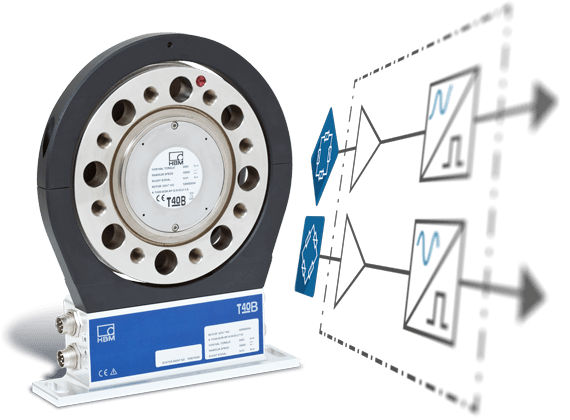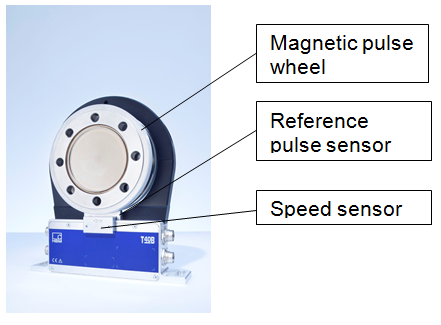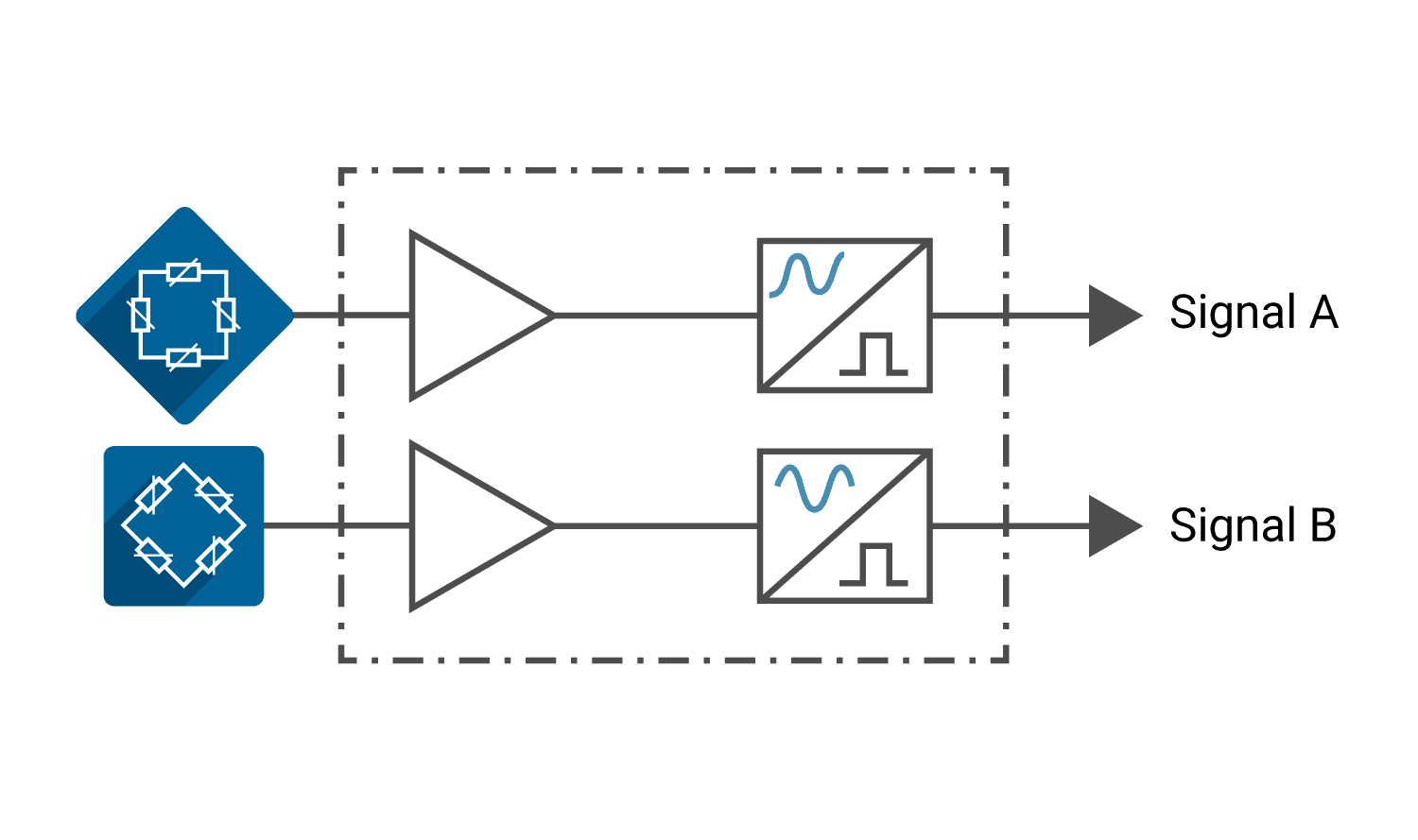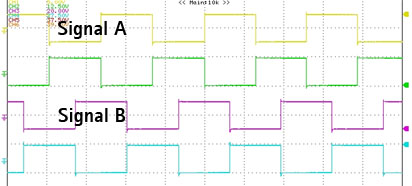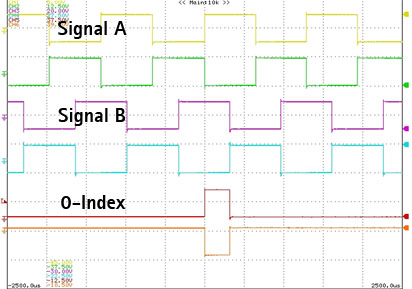Implementation of a Rotational Speed Measuring System
The magnetic plastic ring's metal carrier is mounted onto the torque transducer's second free sensor, so it is fully integrated. This saves space and significantly facilitates installation.
The system is based on contactless sensing of a magnetic pulse wheel using an anisotropic magneto-resistive (AMR) sensor. When the sensor used is subjected to a magnetic field, its resistance value changes, depending on the angle of magnetization and the resistor's direction vector. The magnetic field is modulated by the relative motion between material measure and sensor. The magnetic field is sensed in radial direction. This guarantees a robust and stable signal. The maximum air gap between pulse wheel and sensor is 2.5 mm.
This makes the measurement system extremely insensitive to the relative motion between rotor and stator that can result from vibration in the test bench.
